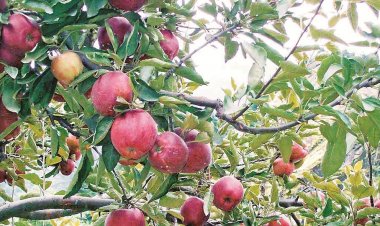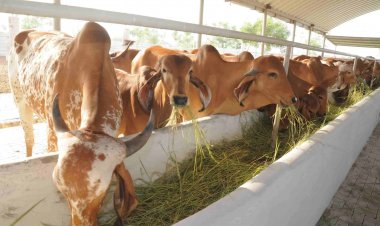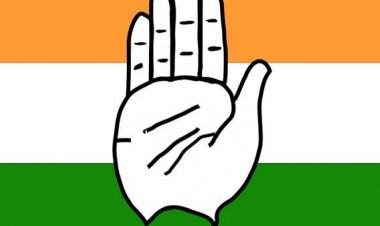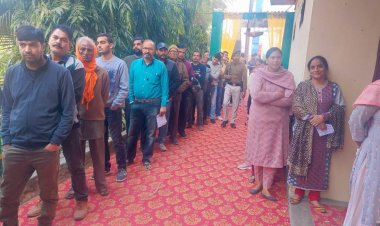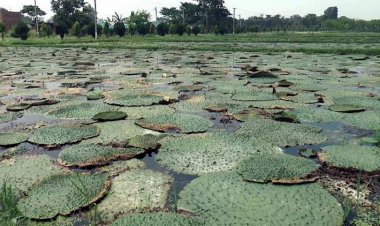Potato goes the onion way - neither price nor buyer, farmers are upset
after the crash of onion prices, when the bumper crop of potatoes came in the market, neither it found good buyers nor reasonable price. While there are schemes for storage facilities for this crop, the reality comes to the fore when one meets farmers in the country's largest potato growing region -- Agra, Mathura, Kannauj, Farrukhabad, Firozabad, Etah, Hathras and Kanpur in Uttar Pradesh.
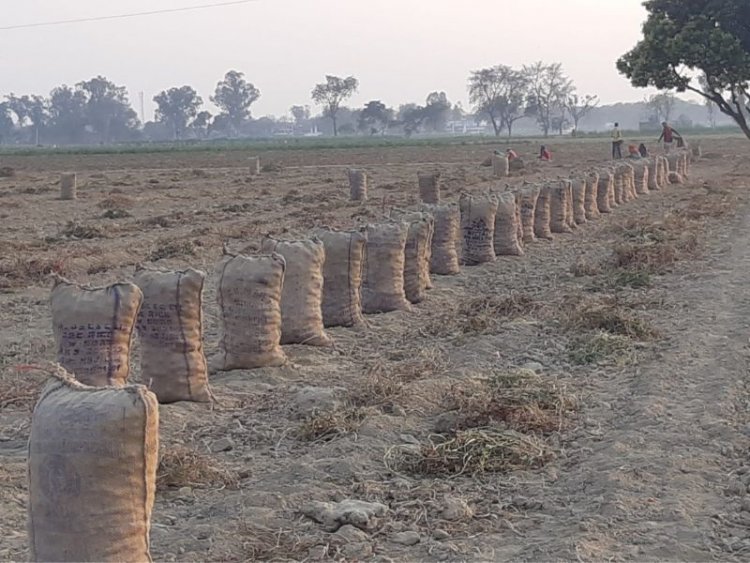
Khanaicha Makanpur (Kanpur)
It is often said that lack of better storage facilities is a major reason for farmers not getting better prices for their produce. There are many schemes like Market Intervention Scheme (MIS), Price Support Scheme (PSS) and Tomato, Onion, Potato (TOP) scheme for the crops for which there is no arrangement of Minimum Support Price (MSP), which save the farmers from losses.
But after the crash of onion prices, when the bumper crop of potatoes came in the market, neither it found good buyers nor reasonable price. While there are schemes for storage facilities for this crop, the reality comes to the fore when one meets farmers in the country's largest potato growing region -- Agra, Mathura, Kannauj, Farrukhabad, Firozabad, Etah, Hathras and Kanpur in Uttar Pradesh.
A similar situation is being faced by onion growers. The price of onion has dropped to less than Rs 400-600 a quintal in parts of Maharashtra, and at certain places it was being sold at just Rs 200 a quintal, presenting a classic case of problem of plenty and prompting Nafed's intervention.
60 per cent of the potato crop has been harvested in the area but no one is ready to invest money on stocking it. The price in the market is about 20 per cent less than last year, that's why farmer Suresh Chand of Kanpur's Khanaicha Makanpur village is planning to store his harvested crop in a nearby cold storage. He has grown a potato variety called Holland (locally it is also called Sinduri) in the expectation of better price. He said that this is superior variety of potato. It sells at Rs two per kg higher than the normal variety. The production cost is ten rupees per kg and the price is four to six rupees per kg. "I am storing it, expecting higher price in the near future," he said.
On the other hand, Dungar Singh, a big potato farmer of Khandauli in Hathras district, says that there is neither a buyer nor an investor. The market is low. Investors use to buy the potatoes from farmers to store in the cold storage for trading purpose, but this year it is not happening.
Farmers are unable to get finance for storing crops in cold storages. Cold storage owners are providing finance to meet the cost of harvesting, bagging and labour cost to the farmers. Farmers are selling some quantity of harvested crop at a very low price to meet the cost of harvesting and to pay the labour. The rest is forced to be kept in cold stores. The condition of the farmers is bad because the stockists who invest money are missing.
He told Rural Voice that initially some new varieties which can be stored for short period were harvested and gave a bumper production up to -- 250 to 300 packets (50 to 55 kg per packet) -- in one acre. Now 3,797 varieties of potato are being harvested and production is lower -- around 20 packets in one acre. This is the main crop to be stored for a longer duration in the cold storages.
Dungar Singh says that this year the expenditure for harvesting and labour cost for grading of potato crop has increased. The expenditure which was Rs.5,000 per acre last year has reached Rs.10,000 per acre this year. Wages for grading have increased from Rs. 30 to Rs. 50 per quintal.
The production picture is also getting clear now and the production of longer duration storage variety is less than last year. So there is no problem of storage capacity. Dungar Singh says that last year about 85 per cent of the total storage capacity was filled. This year it will be between 85 to 90 per cent.
These facts prove that the prices of potatoes are not falling due to bumper production and storage capacity, but those who invest money on its storage are missing and the government support to farmers is also missing, so they are falling.
In an order issued on March 10, 2023, by the Department of Horticulture, Government of Uttar Pradesh, a step was taken to fix the rate of storage of normal potatoes in cold storage at Rs 230 and for sugar free potatoes at Rs 260 per quintal.
Along with this, the news of announcing the purchase of potato by the government agencies at Rs.650 per quintal has also appeared in the news media. Questions are also being raised about how effective these two steps are on the ground.
A cold storage owner told Rural Voice that the Cold Storage Act of 1976 in the state had provisions for fixing storage rates for cold storages. At that time there were very few stores. But later when government made subsidy provision for setting up cold storage, cold store number increased rapidly. Entrepreneurs and farmers set up cold storage capacity on a large scale.
At present, Uttar Pradesh has the highest cold storage capacity in the country and the maximum number of them are also in Uttar Pradesh. According to that entrepreneur, in 1997, government had removed the provision for fixing storage rates for cold storages from the Horticulture Act. Therefore, what is being announced now is not binding.
On the government’s proposed purchases under MIS, potato farmers says that the price fixed at Rs 650 per quintal for it is insufficient as it is less than the cost of production. Along with this, the farmers have to ensure that the government procurement agencies take potatoes of medium size. They take neither big potatoes nor small ones. In such a situation, after the sorting of potatoes, the potato which is left with the farmer will not get a better price.
In such a situation, whether the farmer will sell potatoes to these agencies is a question in itself.
Now, if we talk about storage, according to information released by the government on September 23, 2020, according to a report by NABARD, there is a need of 350 lakh tonnes of cold storage capacity in the country for perishable produce.
According to the government, at present there is a cold storage capacity of 374.25 lakh tonnes across the country as per the data released by the government, as on August 31, 2020.
In state-wise number of cold stores and total cold storage capacity, Uttar Pradesh has the maximum number of 2,406 cold stores with a total capacity of 147.14 lakh tonnes. That is, more than 30 per cent of the country's cold storage capacity is in Uttar Pradesh.
It, therefore, becomes clear that if the government wants, the farmers will get the necessary financial support for their crops to store it to get better price in coming days.



 Join the RuralVoice whatsapp group
Join the RuralVoice whatsapp group


















